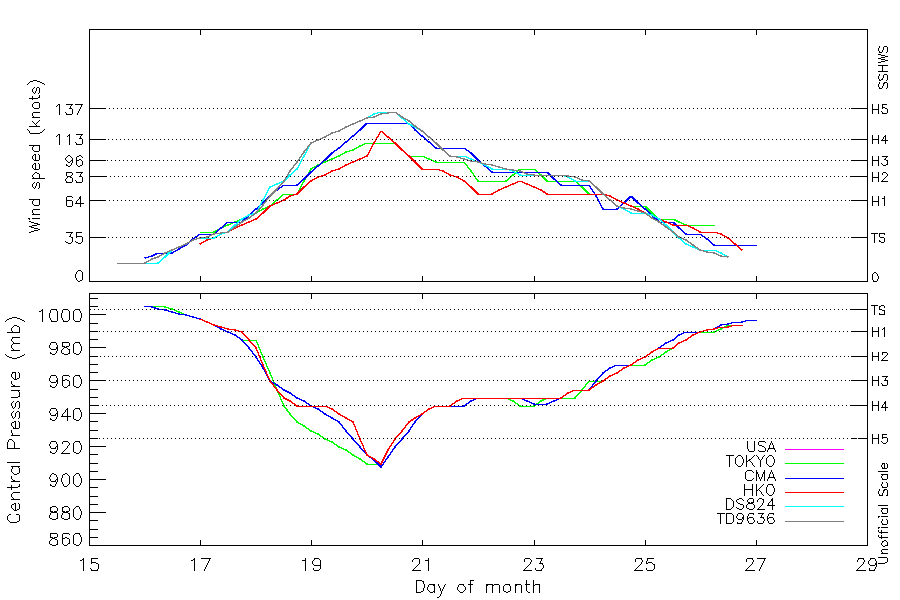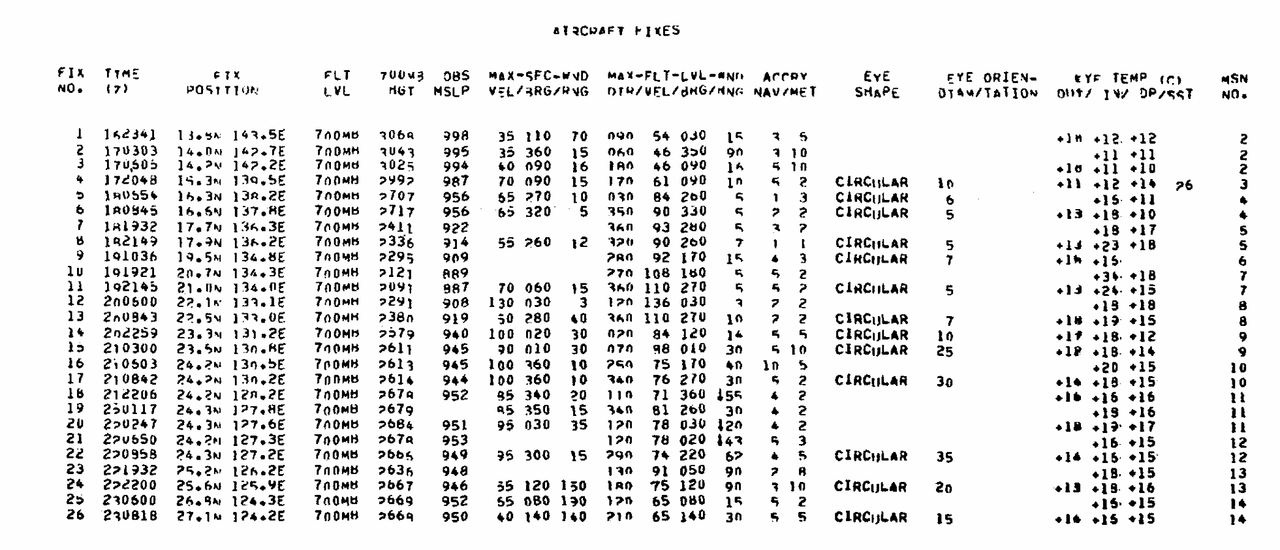I did some reanalysis of the peak intensity of hurricane Jova in 2023. Of course it's difficult for an official agency to be bullish regarding a TC when there are no land threats and direct measurements, so I understand why the NHC kept Jova at the intensity it had. Saying 'it was almost certainly a cat 5, but besides that we don't know exactly' is probably the safest bet. But since I don't have the same responsibilities as the NHC I'm free to be a bit more free in my estimates

.
Anyways, I first calculated the expected wind speed of hurricane Jova based on the different satellite estimates and then used this new wind speed value with the KZC wind-pressure relationship to find the associated pressure.
ADT2023SEP07 014020 5.9 948.8 112.4 5.9 6.0 7.8 1.3T/6hr OFF OFF OFF OFF 16.85 -77.29 EYE -99 IR 4.6 15.40 112.76 ARCHER GOES18 33.2
2023SEP07 124020 7.2 917.2 146.0 6.5 6.4 6.4 NO LIMIT ON FLG OFF OFF -38.62 -72.64 EYE -99 IR 24.7 16.80 115.26 ARCHER GOES18 31.7
Raw T# peaked at 7.8 with a peak in the CI# of 7.2. Since the Raw T# started dropping 12 hours after an eye became visible, I put more stock in the more consistent CI# and use its associated value of 146 kt, 917 mb for the ADT intensity estimate.
AiDT20230907 074020 143 135 140
20230907 081020 146 136 140
20230907 084020 146 137 140
20230907 091020 146 137 140
20230907 094020 146 137 140
20230907 101020 146 136 140
During the same time period AiDT peaked with a slightly lower peak strength of 137 kt.
AMSU, , , , , , , , , , , , , , , , , , ,
EP, 11, 202309070443, 30, AMSU, IP, , 1595N, 11342W, , 2, 157, 1, 909, 1, MEAS, , , , , , , , , , , , 4, , E, CIMS, , , , , , , , 909, , NOAA93, , , , , , , , , , , , , , , ,
AMSU on the other hand peaked at a whopping 157 kt, 909 mb.
D-MINT20230907 0208 UTC SSMISF17 932 hPa 145 kts 137 kts 153 kts current 11E intensity image
D-MINT had a peak intensity of 145 kt, 932 mb.
D-PRINT20230907 0500 UTC 935 hPa 144 kts 137 kts 151 kts
At the same time as D-MINT, D-PRINT peaked at 144 kt, 935 mb.
SATCON2023 EP 11 250.278 2023SEP07 064020 16.09 113.98 3 923 148
In terms of wind speed SATCON peaked at 148 kt, 923 mb (a few hours later there was a slightly lower pressure estimate of 919 mb).
Wind blendAll of the above estimates show a peak intensity between 02:00z and 08:00z, which is close enough together that I think a direct blend of the above values is possible. This would thus result in a peak intensity of 146 kt, 923 mb.
KZC relationshipNow I use the KZC relationship to find a potentially more accurate pressure value associated with the wind speed of 145 kt (rounded down from 146 kt since we usually work in steps of 5 kt). For this I used the following input values during peak intensity of 03:00z.
Vmax = 145 kt
C = 14 kt
R34 = 121 nm
Lat = 16.2 deg
Background pressure = 1008 mb
This then results in a pressure estimate of 916 mb.
ConclusionThe official peak intensity for hurricane Jova is 140 kt, 926 mb. Based on a blend of all available satellite estimates and the KZC relationship, I estimate that Jova's peak intensity was slightly stronger at
145 kt, 916 mb in the early hours of September 7.



















